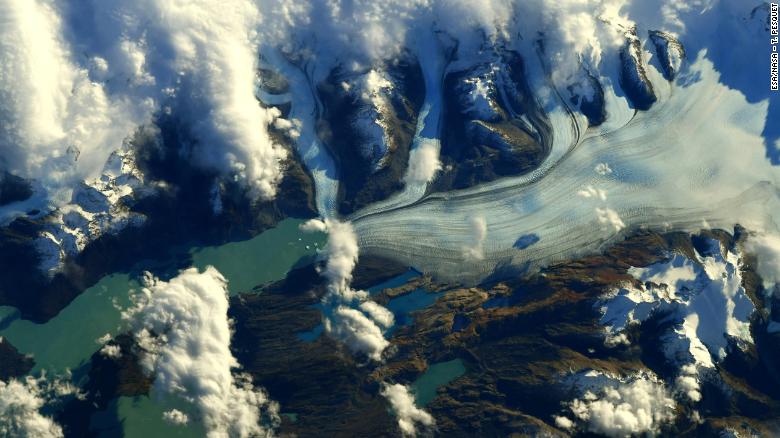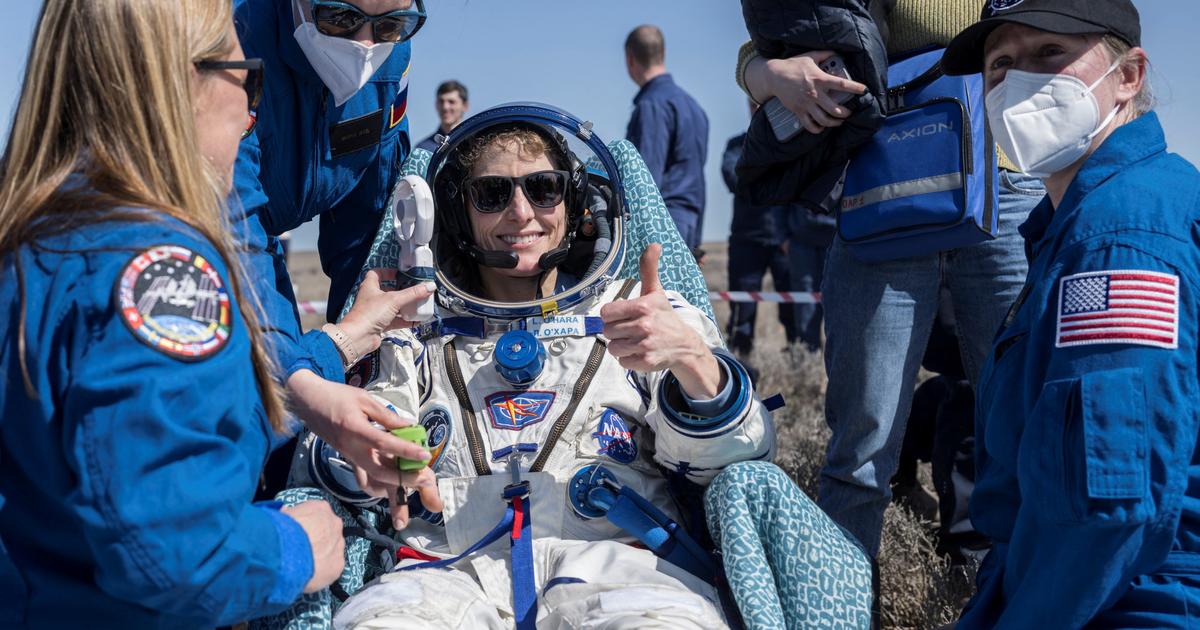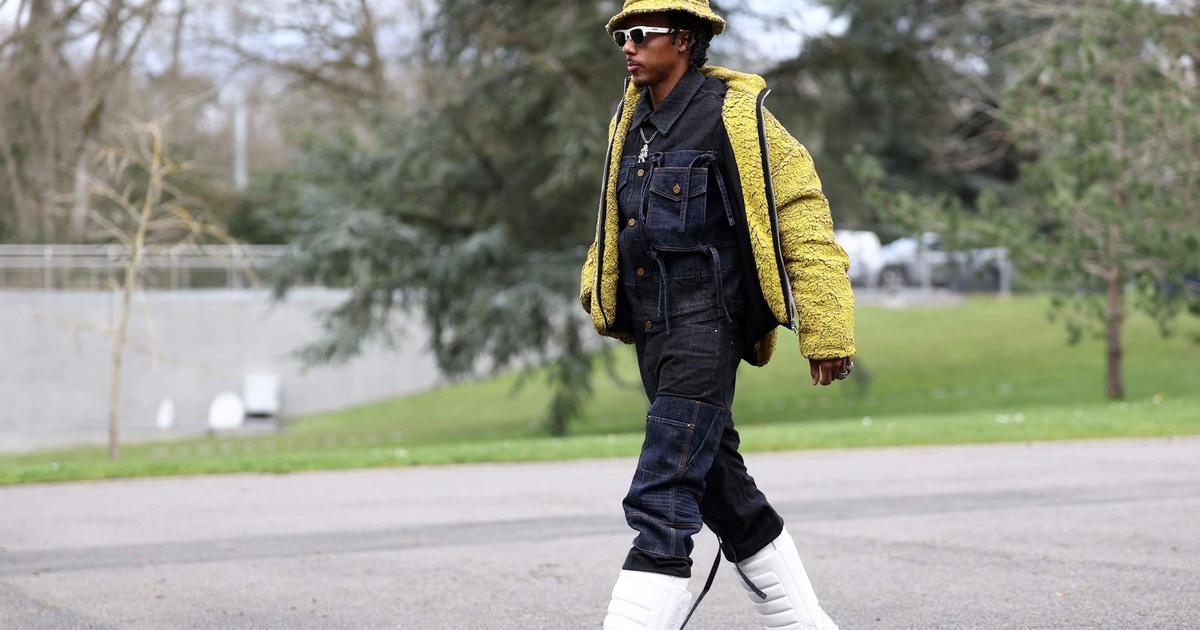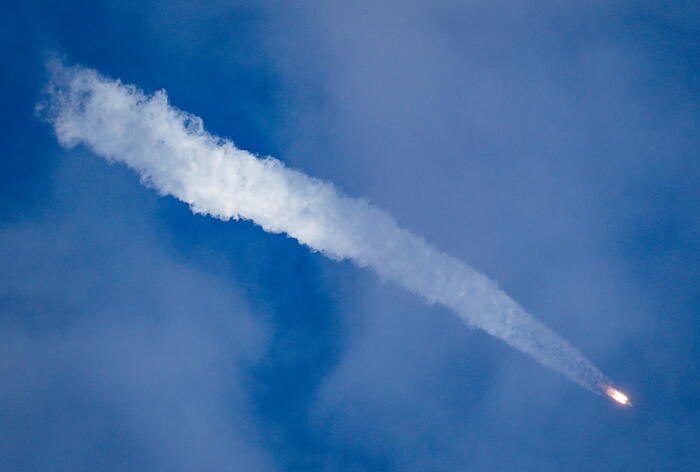1 of 15
|
In 2021, French astronaut Thomas Pesquet spent six months aboard the International Space Station (ISS).
He says that when you see the Earth from space, "you suddenly realize that we live in an oasis in the cosmos. Around us there is nothing... apart from this blue ball with everything we need to support human life, and life in general, which is absolutely fragile".
Credits: ESA/NASA-T-Pesquet
2 of 15
| Pesquet says that the impacts of climate change are increasingly visible from space. Last year he took this image of the Upsala Glacier in South American Patagonia from the ISS. "The majestic spectacle with slow waves of ice flowing into the blue water is beautiful, but also worrying," he wrote. "Glaciers are getting smaller and smaller and this is very noticeable to astronauts in space. Earth observation satellites are also monitoring this progression, providing scientists with data that confirms climate change." Credits: ESA/NASA-T-Pesquet
3 of 15
| This image from a Copernicus Sentinel-3 satellite shows plumes of smoke from several wildfires. In July 2019, hundreds of forest fires broke out in Siberia, caused by record temperatures and lightning, affecting millions of hectares of land, according to the European Space Agency. Forest fires release pollutants and greenhouse gases into the atmosphere. Credits: Modified image from Copernicus Sentinel Data 2019 / Processed by ESA.
4 of 15
| This June 24, 2019 Copernicus Sentinel-2 satellite image shows wildfires east of Phoenix, Arizona. It also shows the red lines of flame retardant sprayed from aircraft and colored red so firefighters can see it. The climate crisis is fueling wildfires across the western United States. Credits: Image modification of Copernicus Sentinel Data 2019/ Processed by ESA.
5 of 15
|
This image captured by a Copernicus Sentinel-3 satellite shows Cyclone Idai on March 13, 2019, west of Madagascar and heading for Mozambique.
The storm caused destruction in Mozambique, Malawi and Zimbabwe, killing hundreds of people.
Credits: Image modification of Copernicus Sentinel Data 2019./ESA
6 of 15
|
This Copernicus Sentinel-1 image shows flooding in Mozambique, on March 19, 2019, following Cyclone Idai.
Flooding is shown in red, around the port city of Beira.
The warming of the oceans due to climate change is causing higher storm surges, increased precipitation and increased intensity of storms.
Credits: Image modification from Copernicus Sentinel Data 2019.
7 of 15
|
While aboard the ISS, Pesquet photographed the beauty of the Earth in its many forms, both natural and man-made.
Pesquet took this selfie on his 100th day in space on the Alpha mission, on July 29, 2021. He wrote that he "kept seeing new things all the time."
Here, his view of the Earth's horizon from the ISS cupola.
Credits: ESA/NASA-T-Pesquet
8 of 15
|
Pesquet took this photograph of sand dunes in the Sahara Desert in September 2021. He read Frank Herbert's book "Dune" as a teenager and took a copy into space with him.
"I look at the dunes that dot the Earth and think that the world Frank Herbert created might very well resemble the Sahara," he wrote.
9 of 15
|
Taken by Pesquet in July 2021, this photograph shows Bora Bora and its turquoise lagoon protected by a coral reef.
Rising sea levels due to climate change could pose a threat to French Polynesian islands like this one.
Credits: ESA/NASA-T-Pesquet
10 of 15
|
Pesquet took this photograph of Dubai, United Arab Emirates, at night.
It was taken about 400 kilometers above Earth, using the longest lenses aboard the ISS.
Credits: ESA/NASA-T-Pesquet
11 of 15
|
A view of Las Vegas, "the city that never sleeps," at night in August 2021. Most of the light appears on the Las Vegas Boulevard (or "Strip"), famous for its hotels and casinos.
Credits: ESA/NASA-T-Pesquet
12 of 15
|
In this image appear the pyramids of Egypt and the Suez Canal.
"Egypt is one of the most easily recognizable countries and one of the most photogenic places to photograph from space," Pesquet wrote.
Credits: ESA/NASA-T-Pesquet
13 of 15
|
This image was made from a stack of 59 shots, each with a 30-second exposure.
Each star leaves a small trail in each photograph and the combination of all these trails creates the circles you see.
They form circles because the ISS is constantly rotating.
Credits: ESA/NASA-T-Pesquet
14 of 15
|
Pesquet was flown back to Earth on the SpaceX Crew Dragon Endeavor spacecraft, landing in the Gulf of Mexico on November 8, 2021. Credit: NASA/Aubrey Gemignani
15 of 15
|
This photograph taken in June 2021 shows the sun setting on Earth.
Pesquet says he is "optimistic for the future" of our planet.
"If we can get a space station to fly, then we can save the planet."
Credits: ESA/NASA-T-Pesquet
(CNN) --
French astronaut Thomas Pesquet spent six months aboard the International Space Station last year, and his view of Earth was as startling as it was impressive.
The long periods with his feet off the mainland gave him a unique and privileged perspective of our planet.
Her Instagram account is filled with beautiful images of "the blue ball we call home."
But the beauty is tarnished.
Pesquet says that even from space the effects of climate change are visible.
Pesquet says that since his previous visit to space, in 2016, the consequences of human activity have become even more apparent, with visible retreating glaciers, and an increase in extreme weather events.
Concern for the environment motivated him to become a Goodwill Ambassador for the Food and Agriculture Organization of the United Nations (FAO).
As an astronaut aboard the ISS, he supported FAO research on agricultural innovation and food production methods.
Limited resources in space offer the opportunity to model human behavior on a planet with dwindling resources, and Pesquet wants to highlight the parallels between life in a spaceship and life on Earth.
Watch climate change in real time: timelapse of a glacier that disappears in six weeks
CNN spoke with Pesquet at the Museum of Natural Sciences in Houston.
This interview has been edited for clarity and brevity.
CNN: What does the Earth look like from "out there"?
advertising
Pesquet:
When you look at Earth from the space station, it's absolutely magical.
You're not that far away, so you still have a relatively close view.
But you can see the curvature and you see the atmosphere.
It shines in blue.
It is absolutely stunning the first time you see it.
It is the most beautiful landscape you can imagine.
When you are on Earth, you feel that everything is so vast, everything is endless.
It's hard for you to understand how limited we are.
Then, when you step back and see the Earth in its entirety, you suddenly realize that we live in an oasis in the cosmos.
Around us there is nothing, there is no life, there is blackness, there is emptiness, there is absolutely nothing, apart from this blue ball with everything we need to sustain human life and life in general, which is absolutely fragile.
The more you see Earth from space, the more you want to appreciate and protect it.
View this post on Instagram
A post shared by Thomas Pesquet (@thom_astro)
CNN: What are the real effects of climate change visible from space?
Pesquet:
From space you can see many of the consequences of human activities.
Some of them come from climate change and others are simply pollution, for example, that of rivers or air.
The most visible effect is the retreat of the glaciers year after year and mission after mission.
But what you also see are extreme weather events.
They are getting stronger year after year.
My first mission was in 2016-2017, and my second mission was five years later, in 2021. I was able to see a net increase in the frequency and strength of extreme weather events like hurricanes, like wildfires.
CNN: What contribution can an astronaut make?
Pesquet:
There are many things that can be done from space to help the planet.
First of all, as a space agency, we have satellites that can observe the Earth and measure variables such as the height of the waves, the temperature of the sea, the retreat of the ice in the polar caps.
But we can also go a little further.
We have experiments aimed at protecting the planet, for example, experiments on fluids.
Orbiting fluids behave differently, so our research tries to understand the movement of magma and lava within the planet, and the movement of waves in the ocean.
This can help us predict some of the extreme weather events that affect our environment.
New high-resolution model predicts more extreme weather events in the future
The most important thing is that we have to manage our limited resources on board the space station.
We have a limited atmosphere, limited water, limited food.
So the way we manage everything on board the space station gives us techniques that we can apply on Earth because the situation is parallel.
I think people on Earth can learn a lot about how space technology treats water, how we recycle water, how we recycle oxygen from the air.
View this post on Instagram
A post shared by Thomas Pesquet (@thom_astro)
CNN: Does being out of space for several months hurt family life?
Pesquet: It's
not easy for us to be up there, nor for the people we leave behind.
The hardest thing is being deprived of your loved ones, and also being constantly worried that if something happens to them, you can't help them.
I think it's every astronaut's nightmare that something happens to their families on Earth while they're away.
I think there's an element of selfishness in me going into space because it's such a fantastic magical experience.
But I also firmly believe that there is a hugely positive impact on society in general by what we do;
for research, for international cooperation.
So I think we have to do it even if there is a price to pay.
It's not easy, but I think it's a good thing.
CNN: As a climate advocate, do you think about the environmental cost of space travel?
Pesquet:
As an astronaut, you witness the fragility of planet Earth, and at the same time you think, "wait a minute, what's my impact on all of this? I'm going to space on a rocket, what impact does that have on the environment?" ?".
Yes, space travel does produce some CO2, and it's not entirely environmentally friendly.
But I think you have to balance the positives and the negatives.
There are so few rocket launches that compared to aviation, automobiles, or other industries, our impact is negligible.
We need activity in space to do research with satellites.
This greatly benefits the planet.
So space travel is a necessary evil.
CNN: Since your return from the International Space Station, what are your hopes for the future protection of our planet?
Pesquet:
If we get on the right track, there's nothing we can't do.
We have built this amazing facility in space for good reason.
We use it every day, in a peaceful cooperation between countries that were not always friends.
So if we can translate that model into the way we treat the environment on Earth, I think we'll do it.
We are creative enough, we have the technology and we have the will.
So I am optimistic for the future.
If we can blow up a space station, we can save the planet.
Climate change















